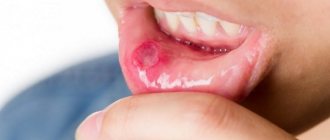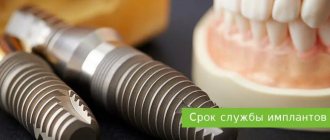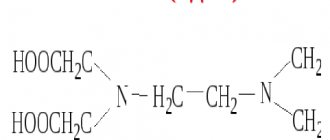Read in the article:
- Why does my throat hurt after drinking alcohol?
- How to relieve a sore throat
- Myths about treating throat problems with alcohol
- Swelling of the uvula
- Treatment of alcoholism
The article was prepared by expert
Chekmarev Maxim Sergeevich
Psychotherapist, psychiatrist, psychiatrist-narcologist
When a sore throat occurs, a person often resorts to treatment with folk or improvised remedies. Many people even decide to “treat” themselves with vodka, without even realizing that it is alcohol that can cause pain. Once in the mouth, vodka can burn the mucous membrane and even damage the vocal cords. In this article we will tell you the reasons why a sore throat may hurt after drinking alcohol, how to cure it and avoid recurrence of the disease.
Why does my throat hurt after drinking alcohol?
In order to make a decision about treatment, it is necessary to know why a person experiences a sore throat after drinking alcohol. There may be several reasons for this:
- Ethyl alcohol acts aggressively when it enters the oral cavity. Very often it causes swelling of the throat and uvula. If you experience such symptoms, you should immediately call an ambulance, as swelling of the throat and uvula can be fatal.
- Microcracks in the tongue and mouth can become inflamed upon contact with alcohol.
- An overdose of alcohol causes vomiting containing gastric juice and hydrochloric acid. It also burns the oral mucosa.
Pre-hospital care measures
What to do if the larynx is burned? First of all, it is recommended to give the victim a drink of cold water, which will alleviate the general condition, relieve pain and swelling, but most importantly, prevent further spread of the burn into the depths of the tissue.
In this case, you need to drink water in small sips, holding it in the throat and mouth. A good effect is obtained by sucking crushed ice or rinsing the larynx with cool antiseptic solutions. In case of a chemical burn, it is necessary to neutralize the effect of the provoking factor. For these purposes, you need to examine the victim’s larynx.
With an alkaline lesion, a dry scab will be noticeable on the mucous membranes. In this situation, a weak solution of acetic or citric acid is used. If a jelly-like scab forms in the throat, then we are talking about exposure to acids, and the patient needs a soda solution to neutralize it.
After providing first aid and alleviating acute symptoms, you need to give the victim a gastric lavage, give him a glass of milk and a little sunflower oil, and then be sure to contact a specialist who will prescribe further treatment!
A burn of the mucous membrane of the throat of the first degree and sometimes the second is treated at home; in more severe cases, the victim is hospitalized. Successful treatment and recovery requires compliance with the following medical recommendations:
- Silence. The patient should talk as little as possible and avoid raising his voice.
- Rinse with chamomile decoction and antiseptic solutions.
- Abstinence from spicy, sour, hard salty foods.
- Following a diet with a predominance of liquid and puree foods. The patient's menu should include broth, sour cream, cheese, eggs.
- Throat burn: symptoms, first aid and treatment
For burn lesions of the throat, treatment involves mandatory drug therapy. A qualified specialist will advise you individually on how to treat a lesion in a particular case. Patients are usually prescribed analgesic and antibacterial drugs, and glucocorticosteroids are used to reduce swelling.
The mucous membranes of the larynx in the affected area are regularly treated with antiseptic and oil products - such procedures give a very good therapeutic effect! The surface of the larynx can also be lubricated with Vaseline, beaten chicken egg, using a sterile cotton swab.
Among the most common traditional medicines used to combat this disease are the use of peach, olive, sea buckthorn and rosehip oils. These products can be used for oil inhalations and external treatment of burned areas. Home treatment for thermal burns may include oil inhalations, sucking ice cubes, applying cold neck compresses, rinsing with sage and chamomile infusions.
Proper recovery also requires certain diet therapy. Products such as egg whites, vegetable and butter, cool drinks, and cream contribute to the speedy rehabilitation of the patient. For medicinal purposes, the oil is consumed in its pure form, 4 times a day.
How to relieve a sore throat
If your throat becomes sore after drinking alcohol, it is important to quickly respond to the symptoms and prevent further development of the disease. First of all, you need to call an ambulance. Until the doctors arrive, you need to provide first aid to the person:
- Stop drinking alcohol.
- Give an antihistamine for swelling.
- Take plenty of liquid and lie down.
- In case of a burn to the mucous membrane, it is necessary to gargle with chamomile infusion, a spoonful of soda or a pinch of salt, and a calendula solution.
- Try to avoid physical or psycho-emotional stress.
Emergency measures
In such a situation, it is very important to take emergency care in time, this will help avoid complications:
- In case of a chemical burn to the throat, it is necessary to stop all contact with the aggressive substance.
- If a Lugol burn occurs on your throat, you should drink cold milk in small sips. This will cool the affected area and flush out the stomach at the same time.
- In order to relieve pain, you can use a solution of Novocaine or Lidocaine.
- To reduce swelling during a Lugol burn, take any antihistamine: Loratadine, Fenistil, Diazolin.
It is important to alleviate the condition of the victim; to do this, you need to provide a flow of fresh air and go outside. The patient must be silent, the muscle tissues and ligaments need rest!
Swelling of the uvula
Drinking alcohol can lead to such a dangerous pathology as swelling of the uvula. If timely measures are not taken, a person may simply die.
Inflammation of this part of the mouth is called uvulitis. The first signs of pathology development:
- redness of the tongue;
- pain when swallowing;
- gagging;
- labored breathing;
- temperature increase;
- speech problem;
- feeling of a lump in the throat;
- painful dry cough.
If timely measures are not taken, the swelling will continue to the stage of blocking the nasopharyngeal lumens. This situation leads to asphyxia (suffocation) with a fatal outcome.
In this situation, it is important to first stop the development of the inflammatory process. To do this, give the patient an allergy medicine and call an ambulance.
First aid for burns of the throat mucosa
First aid should be provided immediately after a burn occurs by people near the victim. The algorithm of actions depends directly on the type of burn (thermal or chemical). That is why it is first necessary to find out what the aggressive factor is.
Providing assistance for a throat burn with boiling water, hot tea or food:
- Calm the victim;
- Cool the mucous membrane of the throat. To do this, give the patient a drink of cool water. You should drink in small sips. If there is ice, then let the ice dissolve by swallowing melt water;
- Rinse your throat with painkillers, which include Novocaine, Lidocaine solution;
- Call an ambulance if severe pain, hoarseness, difficulty swallowing and general deterioration are observed;
- Prohibit the victim from talking. This will lead to increased pain and worsening vocal cord injury.
First aid for chemical burns of the throat mucosa:
- It is imperative to call an ambulance. Only a qualified specialist can determine the severity of the damage;
- Gargle with cool water;
- Rinse your throat with a neutralizing solution. If the burn injury occurs due to contact with acid, then an alkaline (soda) solution is prepared. Take 300 milliliters of boiled and cooled water and 1 teaspoon of baking soda. In case of an alkali burn, the mucous membrane is treated with a weak solution of vinegar or lemon juice (acid);
- In this case, it is not recommended to rinse the stomach using the restaurant method; the pathology will only worsen.
Clinical signs
Symptoms of a laryngeal burn depend on the damaging factor, the severity of the injury, location and health of the patient.
Most common complaints:
- excruciating pain when trying to swallow;
- burning sensation in the oropharynx area that intensifies with inspiration;
- vomit;
- fever with an increase in body temperature to 38-38.5 ◦C;
- copious secretion of saliva;
- hoarseness of voice;
- cough with bloody sputum, in which pieces of necrotic tissue can sometimes be found;
- difficulty breathing due to swelling of the pharynx and larynx;
- enlarged lymph nodes and their pain on palpation;
- in case of chemical burns – a specific odor from the mouth;
- in severe cases, asphyxia, loss of consciousness, and shock are possible.
Pathological process depending on the severity of the burn:
First degreeCharacteristic:- general condition is not impaired;
- superficial damage to the mucosa (slight hyperemia and swelling).
A few days after the accident, the dead tissue is shed and replaced with healthy cells.
Second degree Clinical manifestations:- damage to the mucous and submucosal layer of the laryngeal wall;
- signs of intoxication are expressed (weakness, fever).
Read also: Is it possible to drink alcohol if you have a stomach ulcer?
On examination, the mucous membrane is swollen, hyperemic, blisters and erosions covered with a white-gray coating are visible. With proper treatment, healing occurs within two weeks.
Third degree Signs:- necrosis affects the deepest layers of the laryngeal wall;
- formation of ulcers;
- serious condition of the patient;
- bleeding is possible.
The patient is hospitalized in the intensive care unit.
The use of neutralizing solutions for burns with acids and alkalis is dangerous, since in this case a lot of heat is generated, which increases the area and depth of the damage.
How to help the victim?
Successful treatment of a burn of the larynx is possible only with competent first aid.
First aid
| Iodine | Damage is caused by the use of concentrated iodine tincture for gargling or treating tonsils. | |
| Inorganic acids and alkalis | The following substances are especially dangerous:
The most common cause of upper respiratory tract injury is inhalation of vapors or accidental ingestion of a substance. | |
| Plants with irritant properties | Frequent cases are burns of the larynx from chili pepper or mustard when inhaling dry spices. The cause of chemical damage is the alkaloid capsaicin. | |
| Biological fluids | The cause of the damage is the regular reflux of acidic gastric contents into the respiratory tract and esophagus during gastroesophageal reflux and gastrotracheal fistulas. | |
| Organic acids (citric, acetic) | In case of ingestion of the solution. | With chemical lesions, the vestibular region (epiglottis, vestibular folds, arytenoid cartilages) is affected. At the site of contact of the substance with tissue, a local inflammatory reaction occurs, which is manifested by swelling and hyperemia of the damaged area. A characteristic feature of acid burns is coagulation (dry) necrosis. It is characterized by the formation of a dry crust. Damage is most often limited to the upper larynx. When exposed to alkali, wet necrosis forms. The mucous membrane becomes loose, which contributes to the spread of the chemical and damage to the lower respiratory tract. Another feature of chemical burns is the absorption of the chemical into the blood.
Thermal burnsA common cause is accidental ingestion of liquid that is too hot. It is also very dangerous to get hot steam into the respiratory tract.
The pathology is often combined with damage to the face, eyes and mouth. This worsens the patient's condition. |







